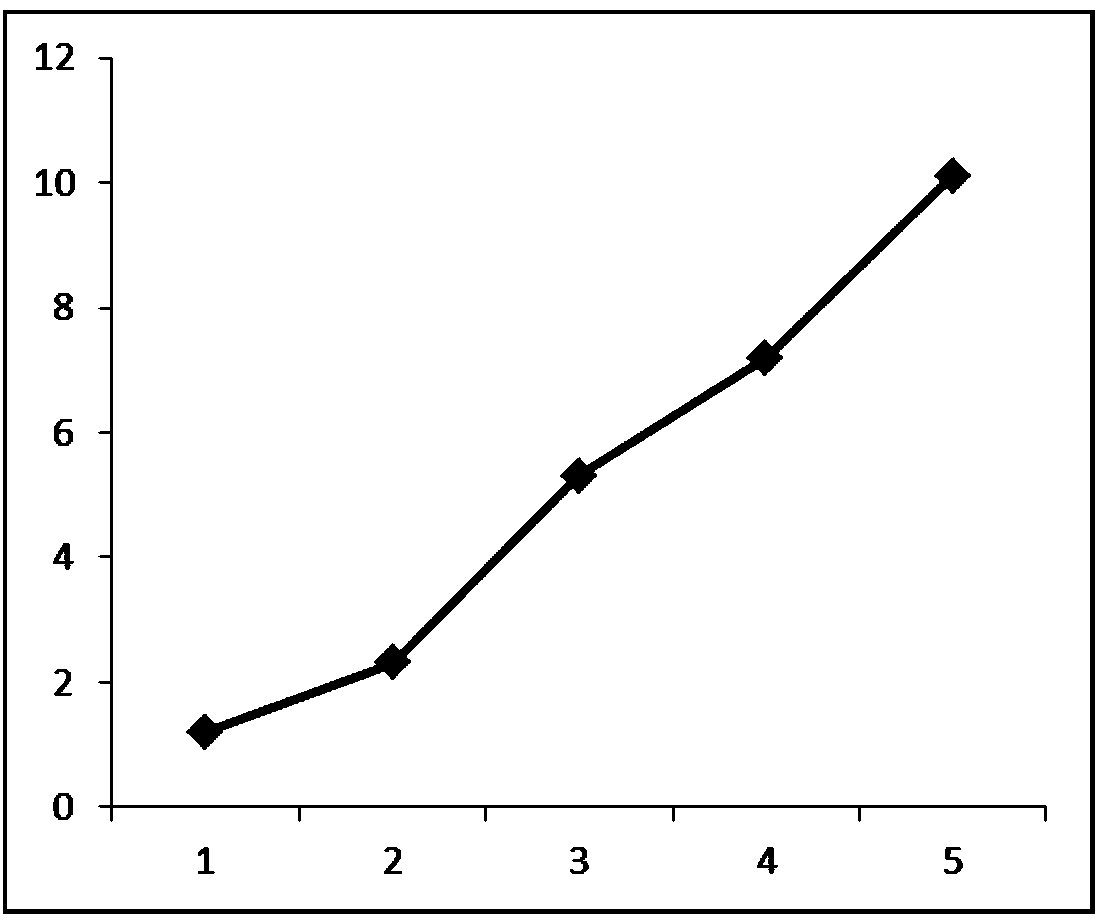Method for high-efficiency in-vitro separation culture of porcine skin-derived stem cells
A technology for the isolation and culture of skin stem cells, which is applied in the field of high-efficiency isolation and culture of adult porcine skin stem cells in vitro, can solve the problems of difficulty in isolation and culture, lack of methods for separation and culture of stem cells, and hinder the further development of research, and achieve good repeatability and easy operation. Effect
- Summary
- Abstract
- Description
- Claims
- Application Information
AI Technical Summary
Problems solved by technology
Method used
Image
Examples
Embodiment 1
[0014] Embodiment 1, in vitro isolation and culture of adult porcine skin stem cells
[0015] In this method, skin stem cells (SDSCs) are derived from adult porcine skin.
[0016] The first step is to separate and clean the skin of adult pigs: cut off the skin on the back and belly of adult sows, cut off the hair on the outside of the skin, and use curved tweezers to scrape off the dirt in the pores, and cut off the subcutaneous fat and connective tissue as much as possible. Clean, soak in 75% alcohol for 5 minutes for sterilization, wash with phosphate buffer saline (PBS, pH7.0) three times to remove residual alcohol, cut the skin into 2-3mm 2 Small pieces were digested overnight at 4°C in 0.25% Trypsin (Hyclone) to loosen the skin;
[0017] The second step, the primary culture of adult porcine skin stem cells: the skin block was washed 3 times with DMEM / F12 (Hyclone Company), placed in 0.25% Trypsin-0.04% EDTA (Hyclone Company), digested at 37°C for 30 minutes, pipette Blo...
Embodiment 2
[0020] Embodiment 2, the alkaline phosphatase staining of adult porcine skin stem cells
[0021] After washing adult porcine skin stem cells in PBS for 3 times, fix them in 4% paraformaldehyde (Solebo) at room temperature for 15 minutes, and prepare the phosphatase staining working solution as follows:
[0022]
[0023] After fixation, wash with PBS 3 times. After the last wash, remove the washing solution and add an appropriate amount of BCIP / NBT staining working solution to ensure that the sample can be fully covered. Incubate at room temperature in the dark for 5-30 minutes or longer (up to 24 hours) until the color develops to the expected depth. Remove the BCIP / NBT staining solution and wash with distilled water 1-2 times to terminate the color reaction. For tissue sections or cell samples, after the chromogenic reaction is terminated, stain with neutral red staining solution (neutral red staining solution) to facilitate observation if necessary. image 3 Alkaline ph...
Embodiment 3
[0024] Example 3, Immunofluorescence chemical analysis of specific gene expression in adult porcine skin stem cells
[0025] Adult porcine skin stem cells that had been passaged twice were taken out, digested into single cells, washed twice with PBS, and fixed by adding 4% paraformaldehyde (Solaibo) for 15 minutes at room temperature. Or wash with PBS 3 times, 5 minutes each time. Permeabilize with PBST (PBS+0.5% Trition-100) solution, room temperature for 10 minutes. Wash with PBS (phosphate buffered saline, pH 7.0) once for 5 minutes. Add PBST (PBS+0.5% Trition-100) containing 10% goat serum or horse serum (Solabo Company), and block at room temperature for 30-60 minutes. Discard the blocking solution, add the primary antibody (1:200, abcam company) diluted in the blocking solution, and incubate overnight at 4°C or 37°C for 2 hours. Wash in PBS with 1% BSA (bovine serum albumin, Solebol Company) 3 times, 5 minutes each time. Add secondary antibody (1:200, Biyuntian Compa...
PUM
 Login to View More
Login to View More Abstract
Description
Claims
Application Information
 Login to View More
Login to View More - R&D
- Intellectual Property
- Life Sciences
- Materials
- Tech Scout
- Unparalleled Data Quality
- Higher Quality Content
- 60% Fewer Hallucinations
Browse by: Latest US Patents, China's latest patents, Technical Efficacy Thesaurus, Application Domain, Technology Topic, Popular Technical Reports.
© 2025 PatSnap. All rights reserved.Legal|Privacy policy|Modern Slavery Act Transparency Statement|Sitemap|About US| Contact US: help@patsnap.com



